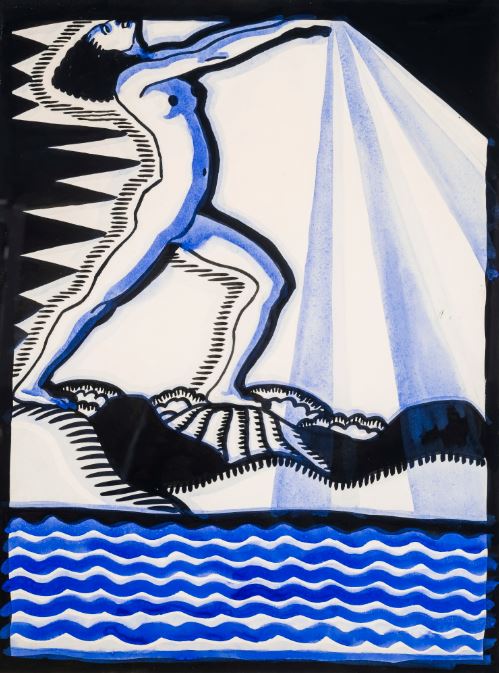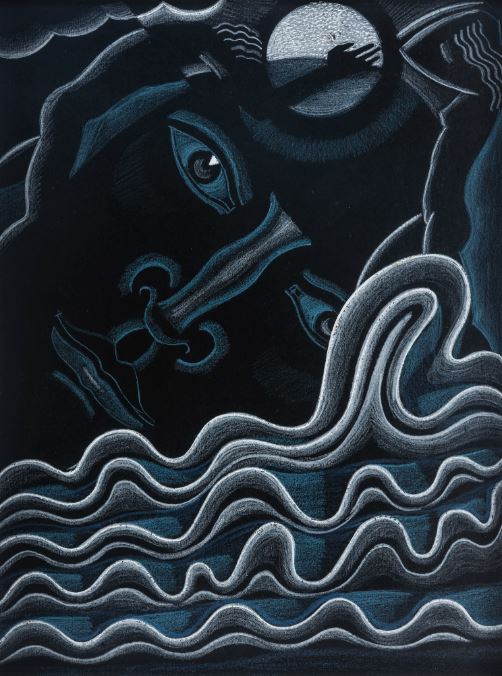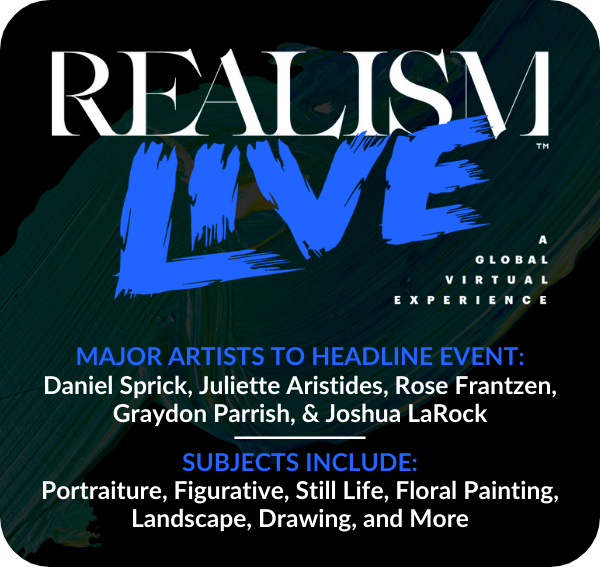
Hirschl & Adler Galleries is presenting an online viewing of works by Winold Reiss, titled “American Characters, Imaginatives, and ‘Paradise Lost'” for the month of July.
From the gallery:
Even during his lifetime, and at the height of his career, the extraordinarily successful German-American artist Winold Reiss (1886–1953) defied categorization. Steeped in the German arts-and-crafts tradition with its permeable boundaries between fine and applied arts, Reiss bucked the hierarchical world of American art and practiced a broad array of artistic disciplines with an excellence and panache that few could rival.
Reiss arrived in New York in October 1913. His first few years in America were busy with illustration, graphic design, fabric design, furniture design, and interior decoration, all while establishing his own art school and pursuing his higher calling as an easel painter. Reiss’s interior design career prospered through the building boom of the 1920s. Arguably, Reiss’s most spectacular and widely publicized interior was his 1930 project for the Hotel St. George in Brooklyn Heights. This included the decoration of the grand ballroom, a cavernous 3,000-person capacity room that architect Robert A. M. Stern called “the single most startling interior public space of the time in New York.”
REISS AND THE AMERICAN WEST
The real impetus of Reiss’s emigration to America was to experience the Wild West firsthand, and in January 1920, he traveled to Montana to meet the Blackfeet Indians. From 1920 until his last trip west in 1948, Reiss produced hundreds of sensitive ethnographic portraits of members of the Blackfoot Confederacy living on both sides of the American-Canadian border. His portraits of members of the Blackfeet testify to the deep respect he felt for the Native Americans. Reiss fully understood that he had arrived at their home just in time to document the passing of a generation with proud memories of better times in the not-too-distant past.
Reiss loved the Blackfeet and they reciprocated his affection. The Blackfeet made him an honorary member of the tribe calling him “Beaver Child,” a reference to his dedication to his work. After Reiss’s death and cremation in 1953 and in accordance with his wishes, Reiss’s Native American friend, Bull Child, scattered the artist’s remains over a Montana hillside in a Blackfeet mourning ceremony.

REISS AND THE HARLEM RENAISSANCE
Starting in 1925, Winold Reiss painted memorable, and in some instances, iconic, portraits of such stalwarts of the Harlem Renaissance as Langston Hughes, W. E. B. DuBois, and Zora Neale Hurston among a host of others. But not all of Reiss’s portrait subjects were prominent figures. As he had always done, in all the places he traveled and worked, Reiss painted portraits of people whose faces “spoke” to him. While Reiss’s portraiture was important to the Harlem Renaissance, it was by no means his sole contribution to this seismic cultural upheaval.
He was also the teacher of Aaron Douglas (1899–1979), who went on to become the artistic figurehead of the Harlem Renaissance. The style that Douglas devised under Reiss’s guidance blended influences from African sculpture and masks with contemporary European currents like cubism. Reiss’s modernist incorporation of African art forms and jazz sensibilities into his contemporary designs permeated the entirety of the Harlem Renaissance’s visual aesthetic, signaling his ethnographic interest in non-Western arts and cultures, and telegraphing his belief that a new American art could be formed out of their artistic traditions.

REISS AND MILTON’S PARADISE LOST
The series of eight Paradise Lost drawings offers an intriguing glimpse into a little-known aspect of Reiss’s career: the oeuvre that he produced for himself, without any immediate commercial purpose, because he was a creative artist who always kept working. They are clearly part of the body of work Reiss called “fantasies” or “imaginatives,” personal expressions in the language of German symbolism that characterized the work of Reiss’s teacher, Franz von Stuck (1863–1928), combined with Reiss’s own idiosyncratic and selective adaptation of developments in contemporary art.
It is appropriate that Reiss would have found inspiration in John Milton’s epic poem, relating the story of Adam and Eve’s banishment from the Garden of Eden. Winold Reiss was a lifelong wanderer and seeker, never entirely at home in his native Germany nor in his adopted home in America. As a 20th-century romantic pursuing a solo path through a welter of influences, schools and media, Reiss’s Paradise Lost drawings are modern, enigmatic, and deeply felt, elaborating on the biblical story of how we all find ourselves wanderers in search of an elusive home.
For more information, please visit hirschlandadler.com.
> Sign up to receive Fine Art Today, our free weekly e-newsletter
> Click here to subscribe to Fine Art Connoisseur magazine, so you never miss an issue
> Join us for Realism Live, October 2020








